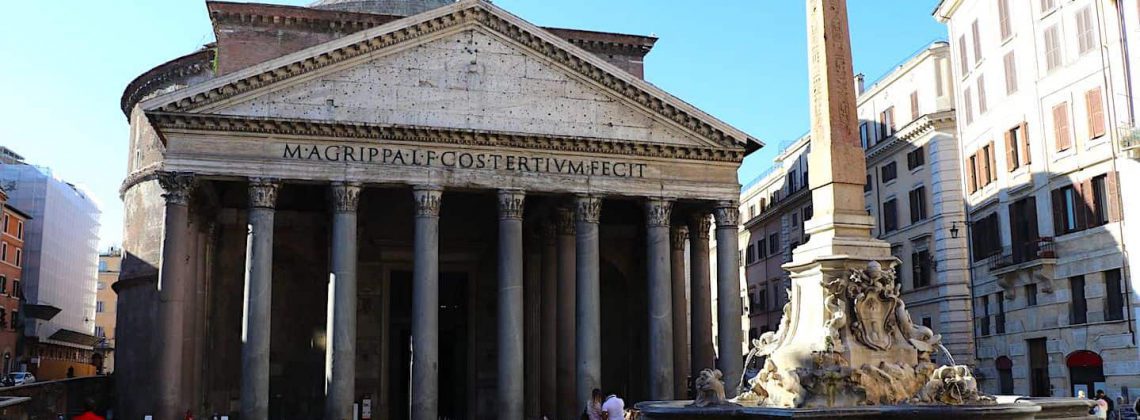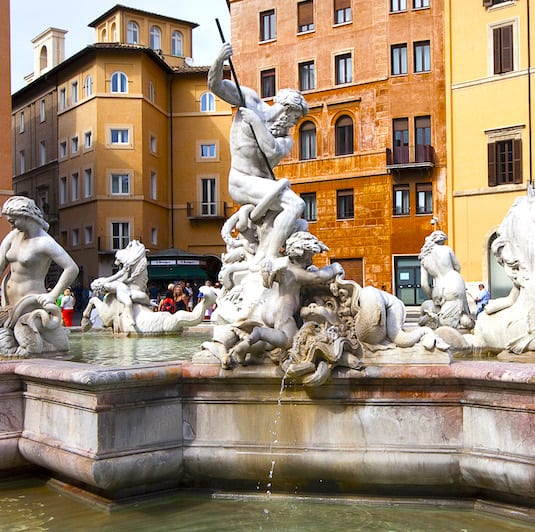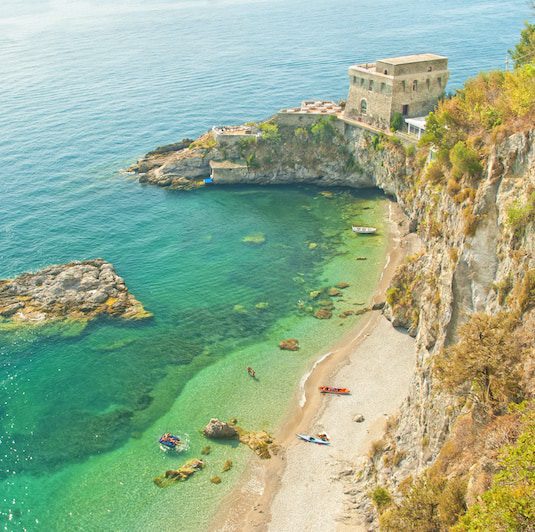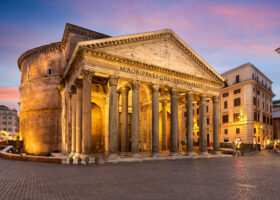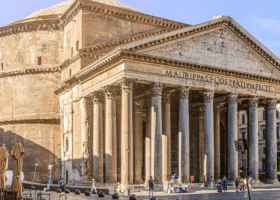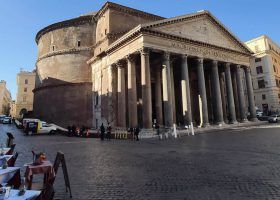Planning a trip to Italy and want to know where the Pantheon is? You probably know it is in Rome, but where exactly is it, and what has happened over the last 2,000 years? In this article, we’ll explain where the Pantheon is, how it became to be, and all the drama in between!
Editors Note: From July 3 2023, a paid ticket will be required to visit the Pantheon in Rome. Tickets cost €5 for adults and free for children. Tickets can be purchased on site. Looking for a stress free visit of the Pantheon with an expert guide? Join us on our popular skip-the-line Pantheon guided tour.
Where Is The Pantheon Today?
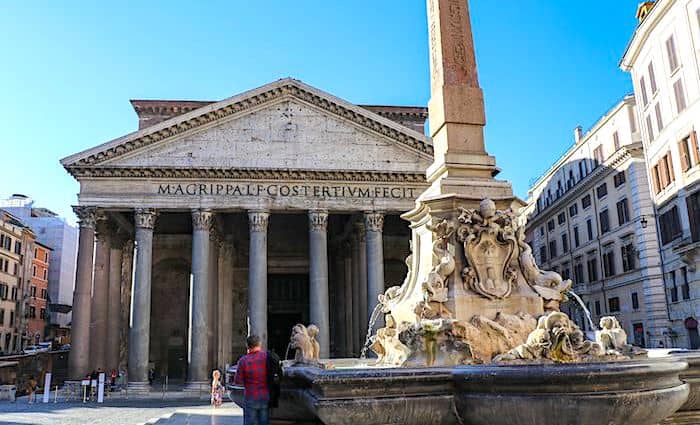
Short Answer: Center of Rome
How long to get there from other famous sites?
- Spanish Steps by Foot: 15 Minutes
- The Trevi Fountain by Foot: 10 Minutes
- Piazza Navona by Foot: 5 Minutes
Address: Piazza della Rotonda, 00186 Roma
I have what I call an impact scale from 1-5 which is when you see something for the first time, how it ” hits” you. This monument definitely ranks up there as a 5 together with the Colosseum and Sistine Chapel.
One of the reasons is that you are walking down some charming winding roads, and then all of sudden, out of nowhere-literally the most amazing, fully intact ancient monument you have ever seen just opens up in front of you.
I still remember the first time that I saw it over 20 years ago- it’s that memorable.
Pedestrian Areas
In order to see the Trevi Fountain you will have to come on foot. In the center of Rome they have what is called ZTL which is an Italian abbreviation that means that only local residents are allowed, with a special permit, to drive in this area. You can take a taxi, which can let you off close, but you will still have about a 5 min. walk from any direction.
One of the magical things about the center of Rome is that there is no rhyme or reason to the way the streets were made. One theory is that after Rome was defeated back in the 4th century BC by the Gauls, they rebuilt the city so fast that it still reflects the haphazard streets you see today.
Now that we got that covered, let’s take a closer look into why the Pantheon was built and what it means to people today.
What Is the Pantheon?
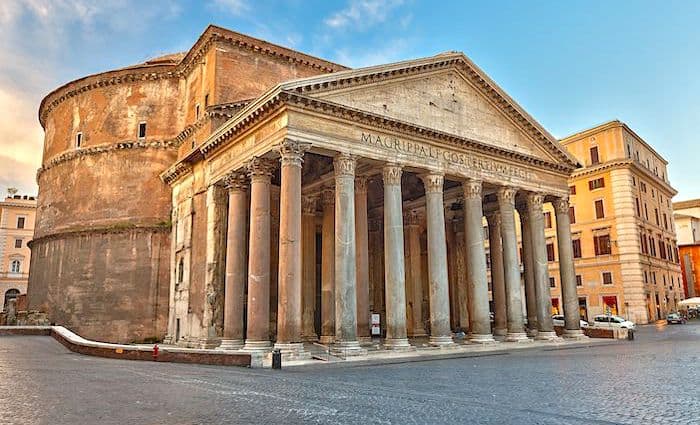
The word Pantheon translates to all-worship or all-gods depending on how you look at it. Contrary to what many have written on the internet, the use of the building was not to worship all pagan gods. Pagan gods didn’t appreciate sharing a temple with other gods.
Some exceptions are for gods conjoined in their purposes like Castor & Pollux. Also, a deified couple like Antonius Pius and Faustina his wife share a temple. But in general, the Romans built temples individually dedicated to a single deity. This is a reason the Pantheon is so famous. Since we are just not sure what it was used for.
What the Roman used the Pantheon for is undocumented at best making any reason I provided mostly assumption or guess. A strong theory from Professor of Archeology Amanda Claridge is that the Pantheon existed for the worship of Emperors yet to be deified. It is no mystery that Romans did not like to worship Emperors as gods until after their death. Claridge states in her Rome Archeological Guide, “the Pantheon provided a setting–not a temple in the conventional sense–in which the living emperor would appear in the company with the gods (including his own deified predecessors).
Construction & Reconstruction

One of the reasons the Pantheon is so famous is the number of times it was rebuilt. According to Amanda Claridge, the Pantheon was first built between 27-25 BC but that building would not be recognizable today. The first structure was built by Marcus Agrippa who was a Roman Consul under the first Emperor of Rome. The original structure was built primarily out of wood and subsequently burnt down about 100 years later in 80 AD.
Domitian took a second shot at it and the structure was struck by lightning and burnt to the ground in 110 AD. You have to realize that these incidents would come across as very bad omens for Rome during this otherwise prosperous time. Lightening was controlled by Jupiter (Zeus) and if it struck the building it would likely signify he was unhappy with it or the Romans in general.
Trajan, emperor at the time, would have likely begun the structure and Hadrian would have finished it. Hadrian was a great Emperor and very humble so he did not dedicate the structure to himself. He instead dedicated it to the man who originally built it; Marcus Agrippa. We will get to that when we go over the porch.
Who built the Pantheon? Many believe the architect responsible is Apollodorus of Damascus but this is again speculation. We do know that Hadrian commissioned renovations on the Pantheon which were completed between 125 AD and 128 AD.
Did you Know There is a Hole In the Dome?
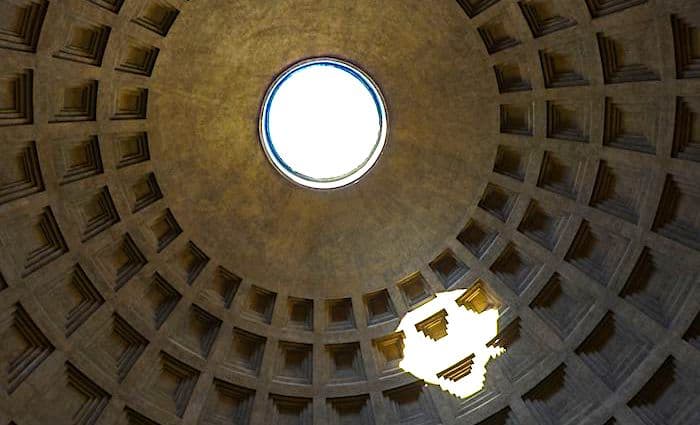
Once you walk inside your eyes will be drawn to the dome above you. Many people stop in the doorway causing traffic jams and we can’t blame you. That is the effect the architect would have longed for. The architecture of Rome was heavily focused on showing the superiority of the Romans. And the Pantheon was no different.
The opening in the center is called Oculus in Latin which means eye. Rain and other elements do get inside the structure when doors are closed. You’ll see the floor sloping down into the center and drains in place to allow water to leave the structure.
There is a bronze ring on the interior of the oculus. There would have likely been decorative bronze fixtures in all of the 140 coffers. The opening in the middle would have allowed for natural light to enter and lighten the entire temple.
Popular Vatican Tours
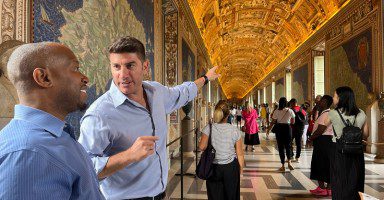
Best Selling Tour
Privileged Entrance Vatican Tour with Sistine Chapel
Without the right access, visiting the Vatican means fighting crowds, long waits, and missing the most significant rooms and works of art. Our privileged entrance tour offers more than just entry—it’s an immersive experience led by a storytelling guide who brings the Vatican to life. Skip the line and explore the Vatican Museums, including the Raphael Rooms, the Sistine Chapel, and St. Peter’s Basilica with engaging insights that make each moment memorable and meaningful.
See Prices
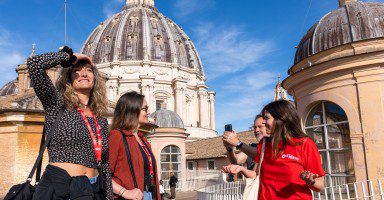
Top Rated Tour
Ultimate St. Peter’s Basilica Dome Climb and Tour with Papal Tombs
Visiting St. Peter’s Basilica and its dome on your own can mean dealing with crowds and waiting in line for hours. Our early-morning tour, led by a captivating local guide, ensures you skip the hassle with privileged access and insider knowledge, including the best times to climb for awe-inspiring views. Explore the stunning Basilica, take in breathtaking panoramas, and descend into the sacred Papal Crypts for a truly immersive experience.
See Prices
The King of the Renaissance Raphael is Buried Here!
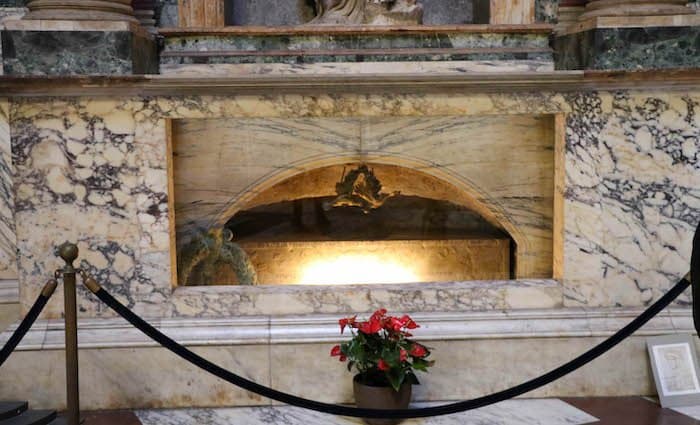
Raphael’s tomb sits in the back left-hand side of the structure. He is buried next to his fiancee Maria Bibbiena which was not by his design. He was madly in love with Margherita Lute who was a baker’s daughter. She was the subject of many of his works of art including La Fornarina (Palazzo Barberini) which translates literally to the baker’s daughter.
Raphael, who lived from 1483 to 1520 and arguably died on his birthday, is situated under a statue of Mary holding baby Jesus to her left which was done by an artist named Lorenzetto.
His tomb reads ILLE HIC EST RAFFAEL, TIMUIT QUO SOSPITE VINCI, RERUM MAGNA PARENS ET MORIENTE MORI which was translated by Alexander Pope to read, “Living, great nature feared he might outvie Her works; and, dying, fears herself may die.”
Here’s Where To Stay in Italy’s Most Popular Destinations
Rome, Florence, Venice, Amalfi Coast, and Capri

